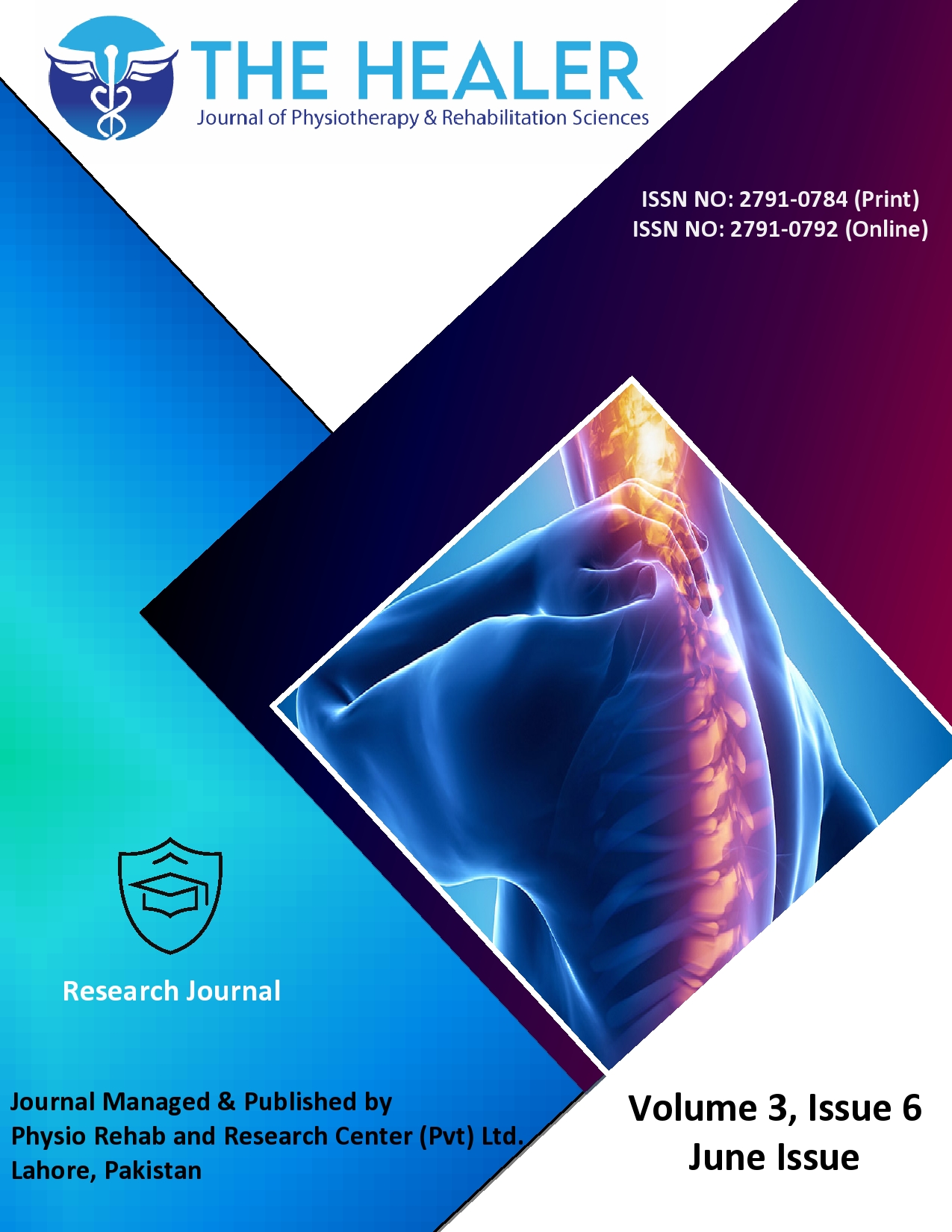Latest Trends and Advancement in Cardiopulmonary Rehabilitation Techniques
Latest Trends in Cardiopulmonary Rehabilitation
Keywords:
Cardiopulmonary Rehabilitation , home-based cardiac rehabilitation, virtual reality, exergamingAbstract
In both developed and developing nations, cardiovascular disease (CVD) is widespread and a leading cause of death. Globally, 17.8 million fatalities and 485.6 million CVD cases were reported in 2017, representing an increase of 1.1% and 28.5% respectively, from ten years prior.1 What’s worse is that by 2030, CVD is predicted to cause more than 22.2 million deaths.2 A multimodal method called cardiac rehabilitation lowers morbidity and death rate.
Recently, artificial intelligence (AI) has entered cardiac rehabilitation for diagnosis, risk factor assessment and therapy.3 There are still concerns about which participants are most likely to benefit from these models, where such programs should be delivered, and their impact on outcomes in different populations, even though data indicate that new cardiac rehabilitation (CR) delivery models are just as safe and effective as conventional in-person CR. It improves exercise tolerance, risk factor control, quality of life, and reduction in hospital readmission and mortality rates.4,5
Downloads
References
James SL, Abate D, Abate KH, et al. Global, regional, and national incidence, prevalence, and years lived with disability for 354 diseases and injuries for 195 countries and territories, 1990–2017: a systematic analysis for the Global Burden of Disease Study 2017. The Lancet 2018; 392(10159): 1789-858.
Organization WH. Global status report on noncommunicable diseases 2014: World Health Organization; 2014.
NavaneethPrabhanandan M, Ashok MA. Artificial intelligence and cardiac rehabilitation: recent trends and future perspectives. Journal of Pharmaceutical Negative Results 2023: 6571-4.
Bellmann B, Lin T, Greissinger K, Rottner L, Rillig A, Zimmerling S. The beneficial effects of cardiac rehabilitation. Cardiology and therapy 2020; 9(1): 35-44.
Beatty AL, Beckie TM, Dodson J, et al. A new era in cardiac rehabilitation delivery: research gaps, questions, strategies, and priorities. Circulation 2023; 147(3): 254-66.
Zhao Y, Li J, Tao C, Ding R. Research hotspots and trends of cardiopulmonary exercise test: Visualization analysis based on citespace. Medicine in Novel Technology and Devices 2022; 16: 100191.
Epstein E, Patel N, Maysent K, Taub PR. Cardiac rehab in the COVID era and beyond: mHealth and other novel opportunities. Current cardiology reports 2021; 23: 1-8.
Brouwers R, Van Exel H, Van Hal J, et al. Cardiac telerehabilitation as an alternative to centre-based cardiac rehabilitation. Netherlands Heart Journal 2020; 28: 443-51.
Vromen T, Brouwers R, Jorstad H, et al. Novel advances in cardiac rehabilitation: Position paper from the Working Group on Preventive Cardiology and Cardiac Rehabilitation of the Netherlands Society of Cardiology. Netherlands Heart Journal 2021; 29(10): 479-85.
Pathak RK, Middeldorp ME, Meredith M, et al. Long-term effect of goal-directed weight management in an atrial fibrillation cohort: a long-term follow-up study (LEGACY). Journal of the American College of Cardiology 2015; 65(20): 2159-69.
van den Houten MM, Lauret G-J, Fakhry F, et al. Cost-effectiveness of supervised exercise therapy compared with endovascular revascularization for intermittent claudication. Journal of British Surgery 2016; 103(12): 1616-25.
Bond S, Laddu DR, Ozemek C, Lavie CJ, Arena R. Exergaming and virtual reality for health: implications for cardiac rehabilitation. Current Problems in Cardiology 2021; 46(3): 100472.
Wongvibulsin S, Habeos EE, Huynh PP, et al. Digital health interventions for cardiac rehabilitation: systematic literature review. Journal of medical Internet research 2021; 23(2): e18773.
Chindhy S, Taub PR, Lavie CJ, Shen J. Current challenges in cardiac rehabilitation: strategies to overcome social factors and attendance barriers. Expert review of cardiovascular therapy 2020; 18(11): 777-89.
Saffaran P, Oh P, Reitav J. Evaluating the Feasibility and Efficacy of A Novel CBTi/SMT Treatment Protocol for Cardiac Rehab Patients: A Non-Randomized Pilot Trial. Behavioral Sleep Medicine 2022; 20(6): 716-31.

Downloads
Published
License
Copyright (c) 2023 The Healer Journal of Physiotherapy and Rehabilitation Sciences

This work is licensed under a Creative Commons Attribution 4.0 International License.









